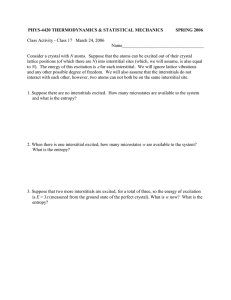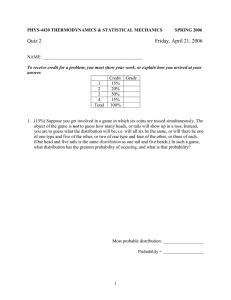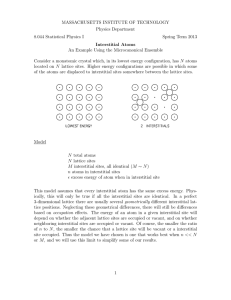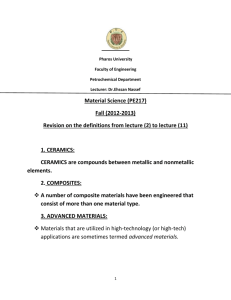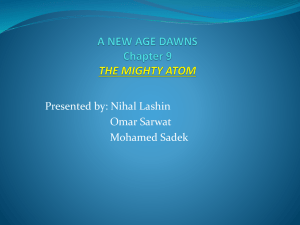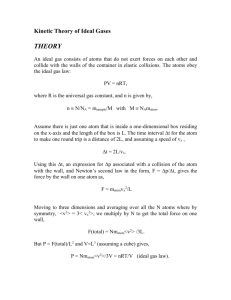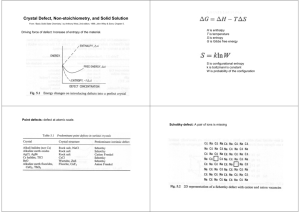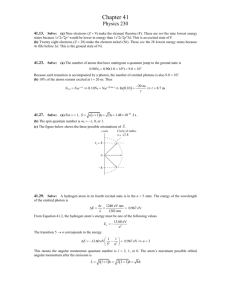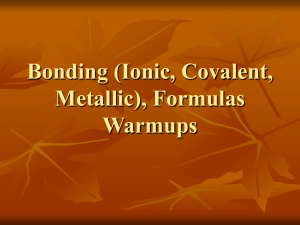PHYS-4420 THERMODYNAMICS & STATISTICAL MECHANICS
advertisement
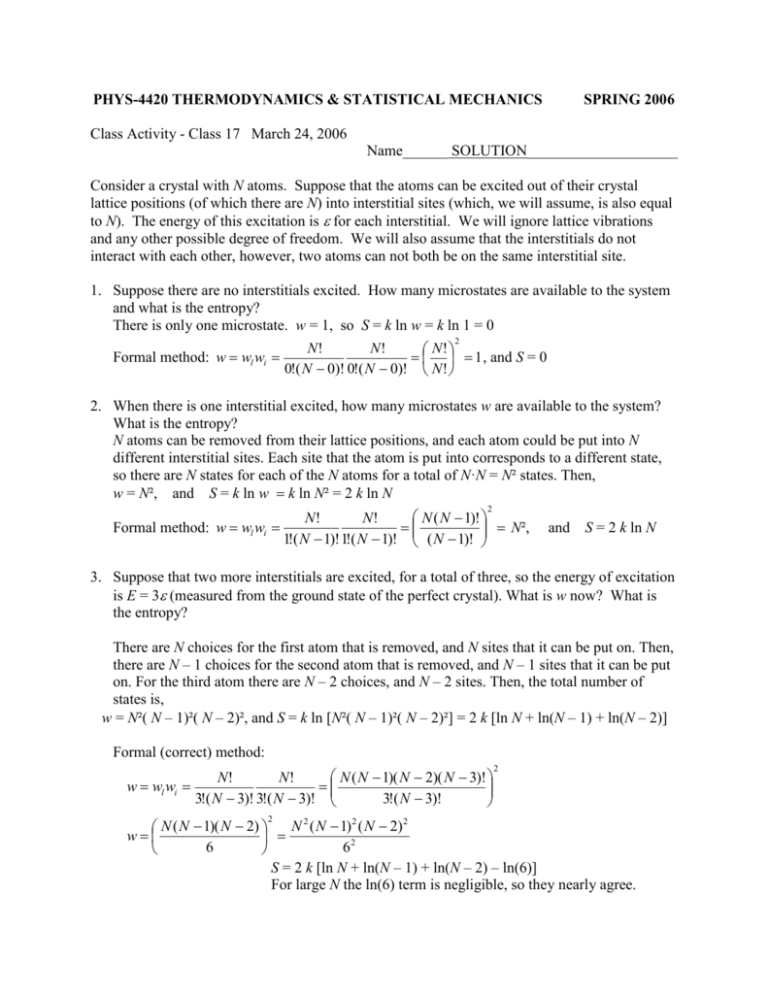
PHYS-4420 THERMODYNAMICS & STATISTICAL MECHANICS SPRING 2006 Class Activity - Class 17 March 24, 2006 Name______ SOLUTION____________________ Consider a crystal with N atoms. Suppose that the atoms can be excited out of their crystal lattice positions (of which there are N) into interstitial sites (which, we will assume, is also equal to N). The energy of this excitation is for each interstitial. We will ignore lattice vibrations and any other possible degree of freedom. We will also assume that the interstitials do not interact with each other, however, two atoms can not both be on the same interstitial site. 1. Suppose there are no interstitials excited. How many microstates are available to the system and what is the entropy? There is only one microstate. w = 1, so S = k ln w = k ln 1 = 0 2 N! N! N! 1 , and S = 0 Formal method: w wl wi 0!( N 0)! 0!( N 0)! N ! 2. When there is one interstitial excited, how many microstates w are available to the system? What is the entropy? N atoms can be removed from their lattice positions, and each atom could be put into N different interstitial sites. Each site that the atom is put into corresponds to a different state, so there are N states for each of the N atoms for a total of N·N = N² states. Then, w = N², and S = k ln wk ln N² = 2 k ln N 2 N ( N 1)! N! N! N², Formal method: w wl wi 1!( N 1)! 1!( N 1)! ( N 1)! and S = 2 k ln N 3. Suppose that two more interstitials are excited, for a total of three, so the energy of excitation is E = 3 (measured from the ground state of the perfect crystal). What is w now? What is the entropy? There are N choices for the first atom that is removed, and N sites that it can be put on. Then, there are N – 1 choices for the second atom that is removed, and N – 1 sites that it can be put on. For the third atom there are N – 2 choices, and N – 2 sites. Then, the total number of states is, w = N²( N – 1)²( N – 2)², and S =k ln [N²( N – 1)²( N – 2)²] = 2 k [ln N + ln(N – 1) + ln(N – 2)] Formal (correct) method: N ( N 1)( N 2)( N 3)! N! N! w wl wi 3!( N 3)! 3!( N 3)! 3!( N 3)! 2 2 N 2 ( N 1) 2 ( N 2) 2 N ( N 1)( N 2) w 6 62 S = 2 k [ln N + ln(N – 1) + ln(N – 2) – ln(6)] For large N the ln(6) term is negligible, so they nearly agree.
